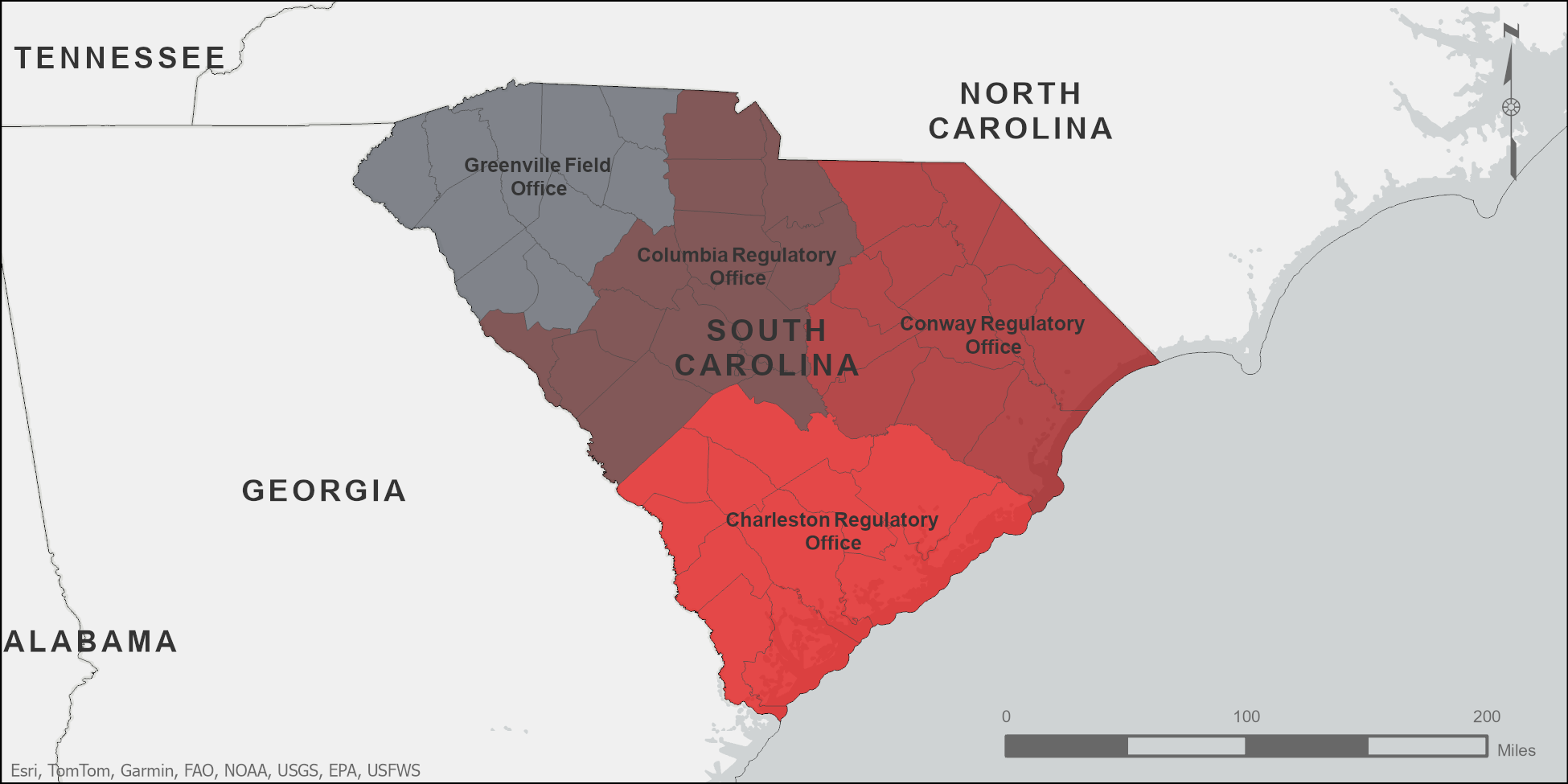Charleston District Regulatory Division
South Carolina

The South Atlantic Division's Charleston District Regulatory Office oversees Clean Water Act (Section 404) and the Rivers and Harbors Act (Section 10) permitting in waters of the United States in the State of South Carolina, ensuring the protection of aquatic resources, and navigation capacity, while allowing reasonable development through fair, flexible, and balanced permit decisions.
Permitting
There are two types of permits that can be used to authorize projects: standard permits and general permits.
Standard Permits
Standard permits are issued for individual applicants or projects and typically authorize activities that may cause more than minimal individual and cumulative environmental impacts. Activities requiring an individual permit cannot proceed without written authorization. There are two types of individual permits:
- Letters of Permission (LOPs)
- Individual Permits (IPs)
For more information, see the Standard Permit Process Overview.
General Permits
General permits are used to authorize activities that are substantially similar in nature—such as utility lines, residential developments, or bank stabilization—and that cause minimal individual and cumulative environmental impacts. General permits may apply within a limited geographic area (such as a county or state), a specific region (such as a group of contiguous states), or the entire nation.
Some activities that qualify for general permit authorization may proceed without written confirmation if they follow all terms and conditions of the general permit. However, many general permits require the Corps to review the proposed work and provide written verification of compliance before construction can begin. Written notification to the Corps is almost always required if the project could impact federally listed threatened or endangered species, or properties included in or eligible for the National Register of Historic Places.
There are three types of general permits:
- Nationwide Permits (NWPs)
- Regional General Permits (RGPs)
- Programmatic General Permits (PGPs)
Nationwide Permits (NWPs)
Nationwide permits are issued to authorize categories of similar activities with minor impacts across the nation. Individual districts may add regional conditions to provide additional protection for aquatic environments.
Final Regional Conditions for 2021 Nationwide Permits in Charleston District for all 57 NWPs, effective February 25, 2022.
Charleston District has developed a table to assist prospective permittees with determining which state permits may be required, as well as the Water Quality Certification and/or Coastal Zone Consistency conditions that would apply to specific NWPs in the State of South Carolina. View the Water Quality Certification and Coastal Zone Consistency Table.
For more information about nationwide permits, visit the Nationwide Permits Information Page.
Regional General Permits (RGPs)
A regional general permit is issued by the USACE district with regulatory jurisdiction over the area where the permit will be used. These permits authorize specific activities within waters of the United States that are common in that region. The following regional general permits are available in South Carolina:
South Carolina Department of Natural Resources (SCDNR) RGPs:
South Carolina Department of Transportation (SCDOT) RGPs:
Compensatory Mitigation
Each year, property owners undertake construction and/or development projects that may affect the nation’s aquatic resources. In accordance with the Clean Water Act (CWA), all proposed activities and projects must make every effort to avoid or minimize adverse impacts to these aquatic resources. The primary goal of the CWA is to restore and maintain the chemical, physical, and biological integrity of the Nation’s waters. Therefore, before beginning work that could impact the function and quality of these waters, a permit from the U.S. Army Corps of Engineers is often required.
In instances where impacts are unavoidable, compensatory mitigation may be required to offset losses of aquatic resources functions. Additional resources for determining compensatory mitigation requirements can be found below: